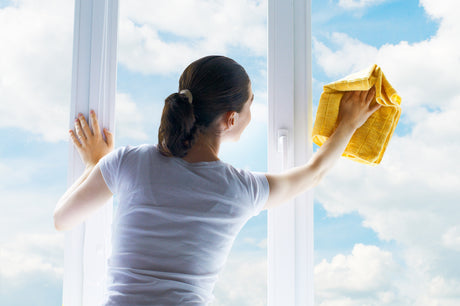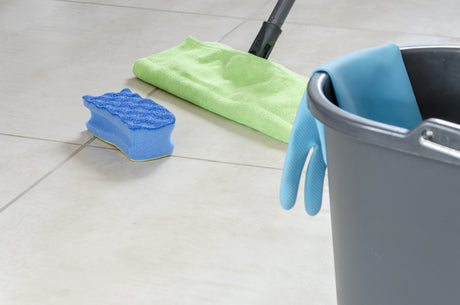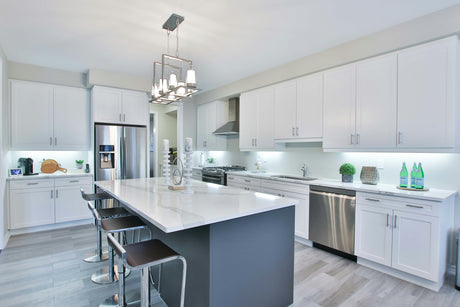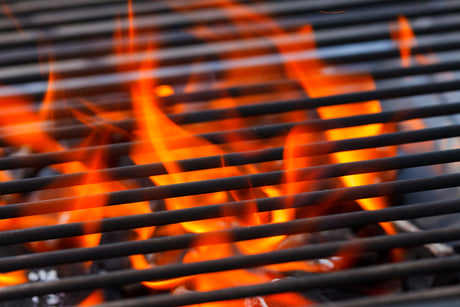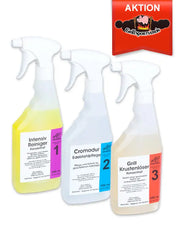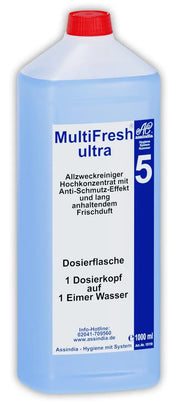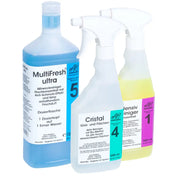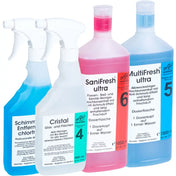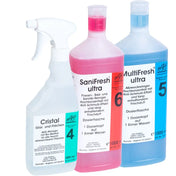Mold in your own four walls is a serious problem that not only looks unsightly, but can also be harmful to your health. Whether on the walls, in the joints or in the basement - mold must be removed quickly and effectively. In this guide, you will learn how to remove mold in your home, what products you need and what precautions you should take. We will also explain when mold removers with chlorine and when chlorine-free mold removers are the better choice.
What is mold and why is it dangerous?
Mold is a microorganism that is found everywhere in the environment. However, it can become a serious problem indoors when it proliferates under certain conditions, such as high humidity and inadequate ventilation. Mold forms spores that are spread through the air and can cause allergies and respiratory diseases in people. People with weakened immune systems, children and the elderly are particularly at risk.
Causes of mold infestation
Mold occurs primarily where there is moisture. The most common causes of mold formation in apartments and houses are:
- Inadequate ventilation : Moisture cannot escape, which leads to condensation.
- Leaks : Water can penetrate into the masonry through leaky roofs, windows or pipes.
- High humidity : In poorly ventilated rooms, such as bathrooms or basements, humidity builds up.
- Cold bridges : These occur when thermal insulation is insufficient in certain places, which leads to condensation of air humidity.
Removing mold: step-by-step instructions
1. Find and eliminate the cause of mold
Before removing the mold, you should identify and eliminate the cause of the moisture buildup. Without eliminating the cause, the mold will keep coming back. Check for leaks, improve ventilation, and reduce the humidity in the affected rooms.
2. Take safety precautions
Mold removal can be hazardous to your health, so you should take the following safety precautions:
- Wear protective clothing : Gloves, a respirator and safety glasses protect against direct contact with mold spores.
- Ventilate the room : Ensure good ventilation to reduce the concentration of mold spores in the air.
- Keep children and pets away : No children or pets should be in the room during mold removal.
3. Remove mold
Depending on the affected area, there are different methods to effectively remove mold:
-
Mold on the wall : Use a suitable mold remover. Apply the product to the affected area and allow it to work according to the instructions. Then wipe the mold off with a damp cloth. If the infestation is extensive, you should consider removing the wallpaper and cleaning the wall thoroughly.
-
Mold on joints : Mold on joints is particularly common in bathrooms. A mold remover containing chlorine is recommended here, as it has a bleaching effect and also removes stubborn stains. Apply the product with a toothbrush or sponge and scrub the joints thoroughly.
-
Mold in the basement : Mold often occurs in basements due to poor ventilation and high humidity. In addition to using a mold remover, you should make sure to regularly ventilate the room after cleaning and possibly install a dehumidifier.
Mold remover: with or without chlorine?
When choosing a mold remover, you have products with and without chlorine at your disposal. Both variants have their advantages and disadvantages, and the choice of the right product depends on the area of application and the materials.
Mould remover with chlorine
Chlorine-based mold removers are particularly effective at removing mold from walls and joints. They have a strong bleaching effect that removes discoloration and kills the mold.
Advantages:
- Strong effect : Chlorine fights mold spores reliably and deeply.
- Bleaching property : Ideal for use on tile joints as it effectively removes discoloration and mold stains.
- Fast results : The effect occurs quickly, causing the mold to disappear quickly.
Disadvantages:
- Odor nuisance : Chlorine has a very intense odor that can be perceived as unpleasant.
- Not suitable for sensitive surfaces : Chlorine can bleach colours and damage delicate materials such as textiles or wooden furniture.
Areas of application:
- Walls (especially in the bathroom)
- Tiles and joints
- Stubborn mold stains on insensitive surfaces
Mould remover without chlorine
Chlorine-free mold removers are gentler and are suitable for more sensitive materials that could be damaged by chlorine.
Advantages:
- Gentle effect : These products are gentler and therefore better suited for sensitive surfaces such as wood, textiles or wallpaper.
- Less odor : Chlorine-free mold removers generally have a milder odor.
- More environmentally friendly : Many chlorine-free products are biodegradable and less harmful to the environment.
Disadvantages:
- Possibly less effective : In some cases, chlorine-free products require a longer exposure time or are not as effective against severe mold infestation.
- No bleaching effect : Discoloration caused by mold is not removed because chlorine-free products do not contain bleach.
Areas of application:
- Paper and books
- Textiles (e.g. mildew stains)
- Upholstered furniture
- Wallpapers and wooden surfaces
Preventive measures against mold
After you have successfully removed the mold, it is important to take steps to prevent re-infestation.
- Regular ventilation : Ventilate several times a day for five to ten minutes to reduce the humidity in the rooms.
- Proper heating : Maintain a uniform temperature in all rooms to avoid the formation of cold bridges.
- Use a dehumidifier : In particularly humid rooms, a dehumidifier can help reduce humidity.
- Eliminate moisture quickly : Wipe up any accumulation of water or condensation immediately to prevent it from seeping into walls and floors.
- Mold-resistant paints and wallpapers : When renovating, you can use mold-resistant paints and wallpapers that make it difficult for mold to grow.
When should you call in a professional?
In some cases, the mold infestation can be so severe or so deep that simple cleaning is not enough. In this case, you should call in a specialist. This is especially necessary if:
- The mold infestation is extensive : Affected areas larger than 0.5 square meters should be inspected by an expert.
- Structural damage is present : If moisture has penetrated the building structure and damaged it, a specialist must be called in.
- You have health problems : If you or your family are experiencing health problems that may be caused by mold, professional help is required.
Conclusion
Mold in the home is a serious problem that must be removed quickly and thoroughly. Depending on the type of infestation and the surface affected, different mold removers can be used. Chlorine-containing agents are particularly suitable for walls and joints, as they not only remove the mold, but also have a bleaching effect. Chlorine-free mold removers are gentler and better suited to sensitive materials. With the right measures, you can effectively remove mold and prevent it from forming again. However, if the mold infestation is extensive or deep, do not hesitate to consult a specialist.



